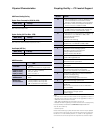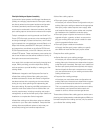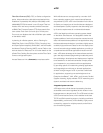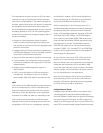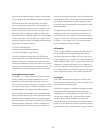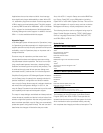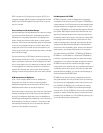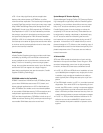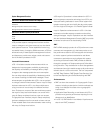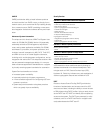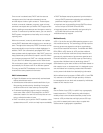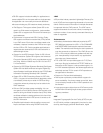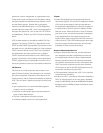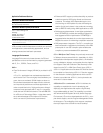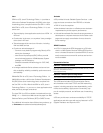67
z/OS 1.5 can help signifi cantly enhance application
backup with enhancements to DFSMShsm to utilize
volume level fast replication. The fast backup is designed
to exploit FlashCopy and the virtual concurrent copy capa-
bility of IBM TotalStorage Enterprise Storage Server and
IBM RAMAC Virtual Array (RVA) respectively. DFSMShsm
Fast Replication in z/OS 1.5 is also intended to provide a
fast, easy to use point-in-time backup and recovery solu-
tion specifi cally designed for DB2 Universal Database
(UDB) for z/OS V8. It is designed to allow fast, nondisrup-
tive backups to be taken at appropriate events when there
is minimum activity at the application level or when a fast
point-in-time backup is desired.
Parallel Sysplex
zSeries Parallel Sysplex technology provides world-class
availability by allowing z/OS workloads to be balanced
across multiple servers to provide near continuous avail-
ability. This form of clustering, known as single system
image, also provides tremendous scale. Up to 32 zSeries
servers with z/OS can appear as a single image for
data sharing applications (see previous section, Parallel
Sysplex Clustering Technology).
CICS/VSAM enabled for 24x7 availability
DFSMS Transactional VSAM Services (DFSMStvs) allows
you to share VSAM data sets across CICS, batch, and
object-oriented applications on z/OS or distributed sys-
tems. DFSMStvs can enable concurrent shared updates
of recoverable VSAM data sets by CICS transactions and
multiple batch applications and 24-hour availability of
CICS and batch applications. DFSMStvs is built on top of
VSAM record-level sharing (RLS), which permits sharing of
recoverable VSAM data sets at the record level.
System-Managed CF Structure Duplexing
System-Managed Coupling Facility (CF) Structure Duplex-
ing is designed to signifi cantly enhance Parallel Sysplex
availability. It can provide a robust failure recovery capa-
bility via CF structure redundancy, and it can enhance
Parallel Sysplex ease of use by helping to reduce the
complexity of CF structure recovery. These benefi ts can
be achieved by creating a duplicate (or duplexed) copy
of a CF structure and then maintaining the two struc-
ture instances in a synchronized state during normal CF
operation. In the event of a CF related failure (or even a
planned outage of a CF), failover to the remaining copy of
the duplexed structures can be initiated and quickly com-
pleted transparent to the CF structure user and without
manual intervention.
JES2 and JES3
JES2 and JES3 handle the submission of work and the
distribution of output for the Base Control Program. JES2
exercises independent control over its job processing
functions, whereas JES3 exercises centralized control.
• In z/OS 1.2, JES2 and JES3 allow an installation to have
up to 999,999 jobs managed at any single point in time.
In addition, both provide the installation the ability to
obtain (spinoff) their JESlog data sets prior to job com-
pletion.
• The JES2 Health monitor, in z/OS 1.4, provides improved
diagnostics. Even when JES2 is not responding to com-
mands, the JES2 monitor, running in a separate address
space, will be able to provide information about JES2’s
status. JES2 also provides enhanced recovery from cor-
rupted checkpoint data to prevent multisystem outages
• In z/OS 1.4, JES3 provides additional tolerance for ini-
tialization errors and the MAINPROC refresh function
which enables the dynamic addition of systems to the
sysplex




